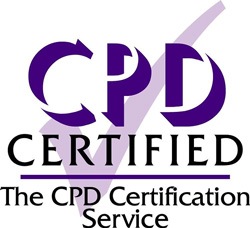Did you hear the one about the accessible wet room with a step…?

The hazy definition of accessibility in hotels
As someone who is a wheelchair user and a regular hotel guest, booking an “accessible” room has always been quite a bugbear for me, and not something that has gotten much easier over time.
Don’t get me wrong, a majority of the hotels I visit have flawless customer service. Members of staff are always pleasant and are clearly well trained, but here’s where it all falls down. Each hotel chain appears to have a different definition or understanding of what accessible is.
To give you an example, when I book a room, I always call the hotel to be certain that they are aware of my needs. Fast forward to the moment I arrive, (often after a long day of travel) and when I enter the room, I discover that this hotel’s definition of accessible is simply having a wet room. (By The way, the title of this blog may sound like a joke- but it is actually something I have experienced first-hand).
This does not count the number of times that something has been lost in translation and the ‘wetroom’ is a actually a bathtub with grab rails, (this for me, is the ultimate disaster as it often requires that I either change hotels or spend the following day unwashed!). Even more infuriating is arriving late to a hotel to find that your reserved accessible room has been allocated to someone else (sometimes without a disability) and you are then left with a standard room!
Entry to the room is difficult and manoeuvring around is virtually impossible as there are tables, desks, and chairs that completely obstruct me from accessing at least half of the room, a half which- I hasten to add -I have paid for. (Not only is this dangerous, it is also a fire hazard). Simply getting through the difficult gaps is a time consuming and arduous task. In fact, it has in the past to have been enough of a physical challenge to cause significant damage to the frame and wheels of my wheelchair.
After struggling to move furniture, I eventually call on the staff to come up and rearrange the room to – well let’s face it – make it ‘accessible’.
I have stayed in countless rooms that have claimed to be accessible but regularly, I have had to call reception and ask staff to open a window for me or even draw the curtains and after a long day of meetings, this is definitely something you would prefer to do yourself.
My point is simple- hotels, if you say you are accessible, understand what it is you offer. Perhaps communicate with the guest during the booking process and when they mention accessibility, ask if extra space for mobility is required, and if it is, ask if they would like that surplus furniture moved out of the room. More often than not, this issue is not about the size of the room but more about the number of ‘standard’ things that get put in it. Neither is it about the age of the building. In the last few days, I have stayed in a hotel which was built within the last 12 months and yet still this problem exists, in this case I could not get a wheelchair down one side of the bed, due to the air conditioning controls!
This level of consideration stretches beyond hotels and into any service or business that claims to be accessible. Using that ‘A’ word means you have a responsibility to ask yourself if your definition is accurate.
Service providers should reflect on whether there are areas of that declaration that need addressing or improving. You may claim to be accessible, but have your staff had disability awareness training? Maybe you are an ‘accessible shop’ with wheelchair access, but your disabled changing room is often used by the manager to hold unused stock?
In which case, it’s time customer consideration became as much of a priority to your business as customer service!
Chris Jay- MD – Bascule Disability Training



